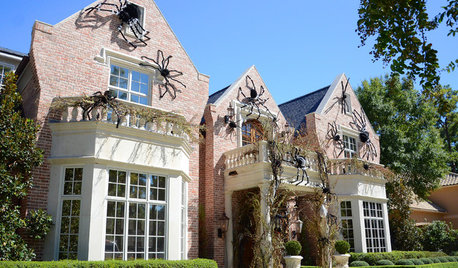If you were renovating a bed and....
creatrix
17 years ago
Related Stories

FUN HOUZZSurvey Says: We’re Scared of Being Home Alone — and Spiders
A new Houzz survey reveals that most of us get spooked in an empty house. Find out what’s causing the heebie-jeebies
Full Story
GUESTHOUSESHouzz Tour: This Guesthouse’s Former Residents Were Horses
A new insulated exterior for a Vermont carriage barn preserves its rustic interior
Full Story
LIFEYou Said It: ‘We’re Here to Stay’ and Other Houzz Quotables
Design advice, inspiration and observations that struck a chord this week
Full Story
It's Cold. We're Cranky. Buy Some Flowers!
15 Colorful Reminders That Spring Will Come Again
Full Story
HOUZZ TOURSMy Houzz: Charming, Beautiful Renovated Victorian
A couple gives a 19th century home in Poughkeepsie, N.Y. a modern footprint
Full Story
PETSRenovation Detail: The Built-In Dog Bed
Give your pup pride of place in your home with a bed built into a cabinet or under the stairs
Full Story
REMODELING GUIDESRenovation Detail: Arts and Crafts Interior Trim
Utilitarian doesn't have to mean afterthought with window and door trim that highlights finely crafted interior openings
Full Story
HOUZZ TOURSMy Houzz: Renovated 1950s Family Home in Texas
A complete overhaul reinvents a dark midcentury home, leaving a cool color palette, an open layout and a nursery splurge in its wake
Full Story
MY HOUZZMy Houzz: Homeowners Get Creative in a Farmhouse Renovation
A Texas farmhouse property gets new life with antiques, modern updates and a rustic recording studio
Full Story
BEDROOMSBefore and After: French Country Master Suite Renovation
Sheila Rich helps couple reconfigure dark, dated rooms to welcome elegance, efficiency and relaxation
Full StorySponsored






pls8xx
creatrixOriginal Author
Related Professionals
Glassmanor Landscape Architects & Landscape Designers · San Juan Landscape Architects & Landscape Designers · Tempe Landscape Contractors · Bainbridge Island Landscape Contractors · Bell Gardens Landscape Contractors · Deerfield Landscape Contractors · Englewood Landscape Contractors · Fort Payne Landscape Contractors · Metairie Landscape Contractors · Middleton Landscape Contractors · Natick Landscape Contractors · Overland Park Landscape Contractors · Riverview Landscape Contractors · Seymour Landscape Contractors · Greenfield Landscape Contractorsdeeproots
Cady
creatrixOriginal Author
deeproots